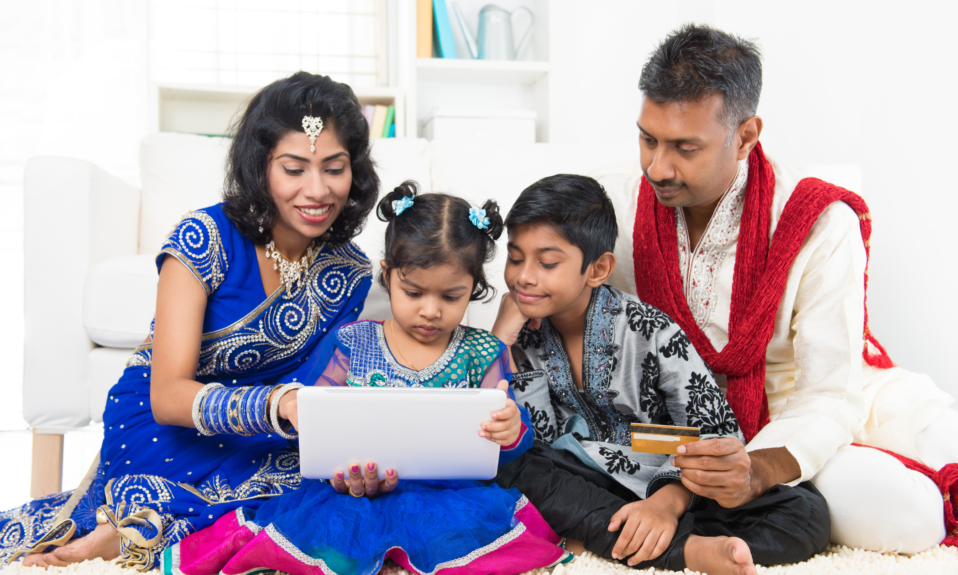
When it comes to bitcoin, the questions never stop. How much is it worth? How does bitcoin mining work? Can I start mining bitcoins? And the list goes on and on, because everybody wants a piece of the world’s most popular cryptocurrency. And why wouldn’t they?
This is why we’ve done some extensive research about bitcoin and bitcoin mining, so you’ll know everything there is to know about this topic. After that, you can decide for yourself if mining bitcoins is something you’d be interested in doing or not.
It all breaks down to costs vs generated revenue. That’s what mining for bitcoins is all about. You need to make sure that you have the right computer gear matched with the perfect mining software and a really good electricity contract so your costs will not go through the roof.
So how do you start mining bitcoins? How does the first bitcoin (or fractions of bitcoin) land into your account? How will you mine and store it? Well, the answer to all your questions and a lot more can be found below, in our step-by-step guide to mining BTC.
How To Mine Bitcoins?
As a future potential bitcoin miner, there are a couple of things you should start reading about. In order to learn how to mine bitcoin, our advice is to go over this bitcoin mining tutorial we have created because you’ll quickly understand the ins and outs of this operation.
Mining is the process of creating, or building, valid blocks that constantly add transaction records to BTC’s public ledger. This public ledger is called a blockchain, which is becoming one of the most interesting technologies in the world today.
Mining and Bitcoin miners, in general, are an essential part of the blockchain. They are the ones solving the “double-spend problem†which is a very common term in the crypto world. This term refers to the need of having a general consensus regarding the entire transaction history conducted on the blockchain.
Your Bitcoin ownership is directly correlated to this issue. Being able to prove how many Bitcoins you own is a mathematical process done through public key cryptography. This specific type of cryptography can’t be broken with the current technology we have available, which makes Bitcoin and the entire blockchain a very safe digital space for your investments.
When we’re talking about safety regarding your investment, we mean that your money can’t be stolen, not that it can’t depreciate in value, as we all know how highly volatile this sector is. Your Bitcoin’s value can drop immediately, and just like that it can rise back up. It’s completely unpredictable, but when it comes to security, it’s totally safe.
Coming back to cryptography, this process alone can’t completely guarantee that one coin or another has not been previously transferred into somebody else’s account. However, having a shared transaction history all over the blockchain, you’ll be able to trace down all the steps, thus solving any issue.
If you place your trust in a third party when dealing with Bitcoin, then you’re giving them the capability of manipulating any external input. Always trade BTC carefully.
Mining and everything revolving around blockchain technology is one of the most reliable methods of providing a safe and efficient way to order data. All third parties undertaking transactions are decentralized, giving them monetary rewards for their correct behaviour on the algorithm.
Any suspicious or incorrect behaviour will automatically result in an economic loss for the miners, given that most people who mine bitcoin remain fair and correct.
Bitcoin mining is done through creating block sequences, which can be proven mathematically that they have been stacked in the correct order, assuring complete transparency of transactions on the blockchain.
This process focuses mainly on the traits of cryptographic hashes, which is a method of encoding data in a standardized way. These hashes are a very efficient encryption tool that operates on a one-way premise only, making the decryption of data close to impossible, if not impossible altogether.
So, we’ve covered the basics of Bitcoin (BTC) mining, but what do miners actually do and how do they get rewarded for their activity?
Bitcoin miners continuously cycle through trillions upon trillions of the above-mentioned hashes in a matter of microseconds, until the algorithm reaches a condition named “difficulty,†and that’s where things really get interesting.
Taking into consideration the hash and the difficulty factors, which are very high numbers, the process will be marked as complete once the hash has become a smaller number than the difficulty. Just like that.
The difficulty factor has a readjustment period of around 2 weeks, which is basically every other 2016 Bitcoin blocks. That’s how blockchain technology works. In order to maintain a stable block time, which is essential for knowing how long it takes to find a new block while mining, this process has to be done in this specific way.
The generated hash will now be used to identify any block you are looking for, and all the necessary data will be stored in the block header.
Out of all these components which form the Bitcoin mining process, the pivotal part of the hash, which is the most important, is called the Merkle root. This is yet again another hash which embodies the signatures of all the transactions stored inside that block plus the unique hash of the previous block located on the same “chain.â€ÂÂÂÂÂÂÂÂÂ
Everything is extremely complex and you should be discouraged if you don’t understand the entire process straight upfront. Nobody does at first. It takes time to understand how Bitcoin and Bitcoin mining works, and that’s why we recommend you continue to read the following rows.
One of the best things about mining is that altering even the smallest part of a block will immediately change the expected hash, and the following parts of the “puzzle†as well, which will instantly be marked as incorrect.
The blockchain’s nodes will block this invalid hash, thus saving the entire network from copying an incorrect transaction which can be directly correlated with a large array of cyber crimes.
Given that this process is extremely difficult and highly-secured, the system basically guarantees that Bitcoin miners have to put in the work with both software and hardware resources. We will talk about the hardware aspect of Bitcoin mining in the next section of the article.
To get a broader picture, the necessary time and electricity used in order to hash through all the possible combinations are turned into Bitcoin for miners, as their reward for ensuring that the blockchain remains clean and correct.
The consensus regarding Bitcoin is that “proof-of-work†is this exact, distinct mining procedure, as opposed to other block-creation mechanisms. So this means that if cyber criminals or hackers plan on attacking the blockchain, the only method possible to recreate Bitcoin with the same efficiency would be to start mining.
Mining is still the cheapest way to get Bitcoins, which makes hackers use their hardware and equipment “for goodâ€ÂÂÂÂÂÂÂÂÂ, instead of using it for cyber crime, which would require more expensive equipment and more allocated time. Not to mention the risks.
Bitcoin Mining Hardware – CPU Or GPU?
When you’ll start looking up the best Bitcoin mining hardware, you’ll find yourself in a huge dilemma regarding the GPU for mining and the CPU for mining. You’ll wonder which one is best suited for your needs, what’s the difference between them and which one should you choose.
Asking yourself these questions upfront is crucial before beginning your Bitcoin mining adventure, because you want to be well aware of how cryptocurrency CPU usage works. You’ll need to evaluate the costs before making serious investments in mining hardware, and only then can you begin calling yourself a true Bitcoin (BTC) miner.
Bitcoin miners get paid based on the work they conduct on the blockchain. They receive amounts of Bitcoin for generating new blocks on the blockchain, thus ensuring the technology and the transactions conducted by millions of people worldwide.
Miners can get new Bitcoins for creating new blocks, or get fees from users in order to transact on their network. These are the two forms through which Bitcoin miners get paid.
With each newly-generated block, the reward amounts to 6.25 BTC. These numbers are valid as of May 2020, and they apply for the vast majority of Bitcoin miners all around the globe. This set value has been programmed to halve itself at fixed intervals defined in the algorithm, which last for approximately 4 years.
This means that at one point, there will be no more Bitcoin left to be mined, which will make miners get paid strictly from the fees they will get from transactions on the blockchain. These transactions will continue to guarantee the security of the network.
According to the blockchain’s algorithm, by the year 2040, the reward received by a Bitcoin miner for each new block will go down to 0.2 BTC, and only 80,000 Bitcoin out of a total of 21 million BTC will remain available for miners to acquire.
Mining will completely end in the year 2140 (if we all last that long), which will mark the period when the last Bitcoin has been mined.
The information provided above is important because you need to understand how the mining process works and what rewards you can get, in order to decide what kind of Bitcoin hardware you need to purchase, based on your mining goals.
At first, your only option for efficiently mining Bitcoin is to buy an Application-Specific Integrated Circuit device (which we’ll later refer to as ASIC). This is the basis of every standard Bitcoin mining hardware setup.
ASICs are designed and created specifically to mine BTC. That’s the only thing they can do, so you can’t repurpose them for other tasks, if you ever consider quitting mining for Bitcoin. Since they were designed specifically for this task, they are very efficient and they work a lot better than any other improvised gear you find online.
They were first launched back in 2013, making all other Bitcoin mining devices obsolete. ASICs took over the cryptocurrency mining industry and you can’t find a miner today that doesn’t use one as we speak.
Are you considering mining with basic CPUS, GPUS, or the more efficient FPGAs? Then you should probably consider mining other cryptocurrencies, because they are not the most efficient in terms of usage, when it comes to mining Bitcoin (BTC).
They produce Bitcoin at a very slow pace, meaning that you’ll eventually consume more electricity than the value of generated BTC.
To paint a better picture, the most efficient graphics card which was available just before the ASIC takeover, was the AMD 7970, and it has a production capacity of 800 million hashes per second. Today, an average ASIC can produce 100 trillion hashes per second, which is 125,000 times more than the best graphics card on the market.
If you want to talk about a huge difference in performance and production, there you have it!
This so-called “hash rate†is the most important aspect when it comes to selecting the right ASIC hardware for Bitcoin mining. You want to have the highest hash rate possible, for the least amount of money. This is why you should always keep an eye out for Bitcoin mining setups.
Besides the above-mentioned factors, you should also take into account the electricity consumption measured in watts, when it comes to buying your Bitcoin mining ASIC.
If you have to choose between 2 ASICs that generate the same hash rate, the one that consumes the least amount of watts is the one you should buy, because you’ll generate a larger profit.
Another measure you should seriously take into consideration when searching for the best Bitcoin mining hardware online is the cost per each ASIC device. If you have a very efficient ASIC device, but it’s extremely expensive, you could wind up turning a profit only after several years of mining. And who wants that?
Given the huge popularity of cryptocurrencies, especially Bitcoin (BTC), the interest regarding the hardware components in this sector has increased dramatically. Prices have gone through the roof and a lot of hardware producing companies are already making record profits.
This just proves to show us the power and value of Bitcoin, and who knows what the future may hold. Who knows what other coins will pop up and take over the world, besides the already well-established Bitcoin, Ethereum, Litecoin and so on.
In order to make a comparison regarding the profitability between hardware components, you should use online calculators to get the numbers right. Feel free to use any of the following websites: Nicehash, AsicMinerValue, CryptoCompare, or any other you may find that offers you more details.
They’ll give you an instant idea of how many watts you will consume and how many dollars you will generate, based on Bitcoin’s price at the moment.
You can also do these calculations yourself by deducting the electricity costs from the Bitcoin generated amount you get from your ASIC. It’s really that easy, but it’s always best to consult online calculators just to make sure that you got your numbers right.
If there are some things that are still unclear to you, we recommend going through the article again, as it is perfectly normal to not understand all the details and particularities straight from the first read.
Now it’s time to go over to the Bitcoin mining software side of things, as you can’t have one without the other.
Bitcoin Mining Software – What’s The Best One For You?
We’ve reached the Bitcoin mining software part of our article, which is one of the most important ones in fact. Having good solid Bitcoin mining hardware can mean nothing if the software you use isn’t very well installed and correlated with your graphic card.
So, what is the best software for Bitcoin miners? What is CPU miner software and all these other mining specific terms? We’ll go through them one by one so you’ll get the full picture about how your Bitcoin mining setup needs to look like.
A lot of people have a fear of installing Bitcoin mining software, because you never know what malware you can get from unverified sources. This is why you should always look up the software provider you are thinking about using, because you need to stay on the safe side.
One of the major risks of Bitcoin mining is the financial loss. The risk of not making money is to be considered, given that inefficient Bitcoin mining software placed together with outdated hardware can really leave a mark on your electricity bill.
You’ll need to find the optimal balance between hardware and software so that your utility bills will not surpass the generated Bitcoin amount you will make. You’ll need to have good management over high-power devices like ASICs, you’ll need to have proper ventilations and carefully check your electrical grid’s limits when you start Bitcoin mining.
You don’t want to burn your entire electrical circuit when you start mining for Bitcoin, so pay extremely close attention to this aspect of mining.
The total electricity consumption per miner will also cause a lot of heat and the ASIC will start being the most heavily used electrical appliances in your household. Keep in mind that your electricity circuit has limits, and each socket has a limit of its own.
This means that you should decide where to plug in your computer, your ASIC, your other air conditioning appliances and so on, in order to not short-circuit your grid. In these situations we always recommend talking to an expert in mining, just to make sure that your setup is safe and good for mining.
Like any other appliance, your Bitcoin mining setup will require constant maintenance and repair, based on the conditions you have established in the mining environment. Failures rarely ever happen, but when some hardware piece isn’t working correctly, check to see if your software is over-using it.
After checking it out, if everything is working fine from a software perspective, this means that you should consider fixing or even changing the broken piece of hardware (most often the graphic card).
Without proper maintenance, your Bitcoin mining rig will not work at maximum parameters, meaning that you’ll not generate the maximum amount of Bitcoins possible. And you don’t want that, do you now?
The most efficient Bitcoin miners always choose to upgrade their setup once they notice that things are heating up faster and they notice a drop in their BTC production. Some of the best historic generations of miners, such as the Bitmain S9, which was released back in 2016, became obsolete in early 2020.
The only way it was still worth mining Bitcoin (BTC) with the Bitmain S9 was if you had free electricity. Other than that, you had higher electricity costs than the generated Bitcoin you were receiving.
Stay up to date with all the latest Bitcoin mining software developments, so you’ll always have the best possible setup to create the largest amount of BTC possible.
Conclusion – Is Mining Worth It in 2021?
In conclusion, what can we say about bitcoin mining in 2021? Is it still worth it? Will it make you a fortune? Although the answers on this theme may vary from person to person and from situation to situation, we’d say that mining is still worth it.
Sure, you can’t expect to have the same returns on investment as you would have gotten for mining back in 2016, but there’s still a pretty penny to be made in this sector if you know how to use your resources correctly.
Let’s say you have really cheap electricity at your disposal, or you have a regenerable green energy source that produces electricity for you. Well, in that case, there’s no doubt about it – bitcoin mining is still worth it in 2021.
Just make sure to have the right hardware plus software combination so you will not wind up switching your graphic cards every other month, because that will definitely cost you a fortune, especially in today’s economic environment.




